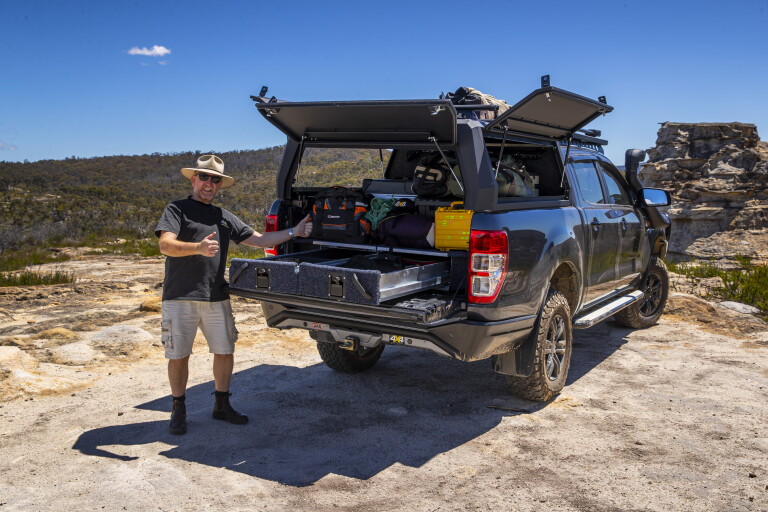
One of the best things about owning a four-wheel drive is the spectacular locations you can access off the beaten track. Of course, the farther you drive off the beaten track, and the longer you are away from services, the more self-reliant you’ll need to be and the more gear you’ll need to carry.
And a lot of gear includes essentials like fuel, water, food, spare parts, tools and recovery equipment, to a power supply, cooking gear, camping equipment, clothes, electronic devices and personal items.
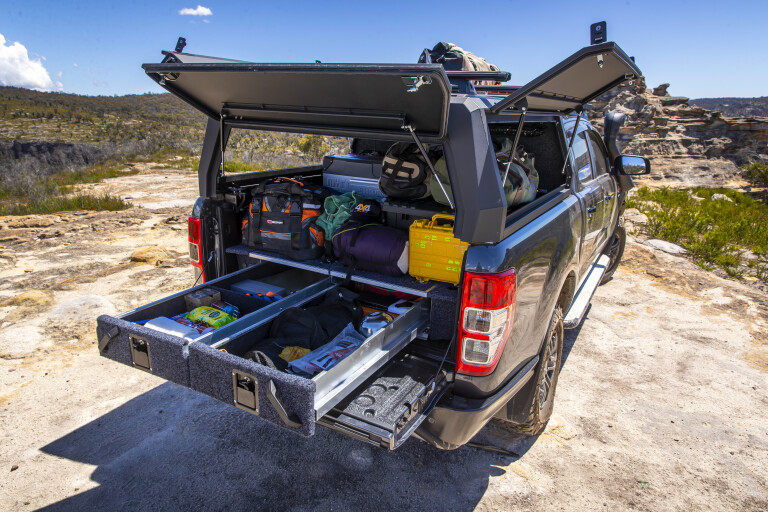
Even if you drive a large 4x4 vehicle, whether a wagon or a ute, you’ll soon find that packing all that gear in to your rig can be quite difficult, both due to the physical size of the items as well as their weight. And then, of course, there’s the gear that you need to access regularly, and the stuff you might seldom need but when you do, you need it quickly.
In this instalment of 4X4 Australia’s How To Series, we’ll take a look how to best pack a vehicle so you can carry everything you need to, safely and securely, and be able to access what you need when you need it.
Pack light
There are several reasons why you want to pack as light as possible when loading up for a trip away. Firstly, your vehicle has a limited payload, which is the maximum weight that it can carry.
The payload is essentially the vehicle’s GVM (Gross Vehicle Mass) less its kerb weight, and this can usually be found in the vehicle’s owner’s manual, or in the specifications section on the vehicle manufacturer’s website. A five-seat Toyota Prado GXL wagon, for example, has a 2990kg GVM and a 2285kg kerb weight, which means its payload is 705kg.
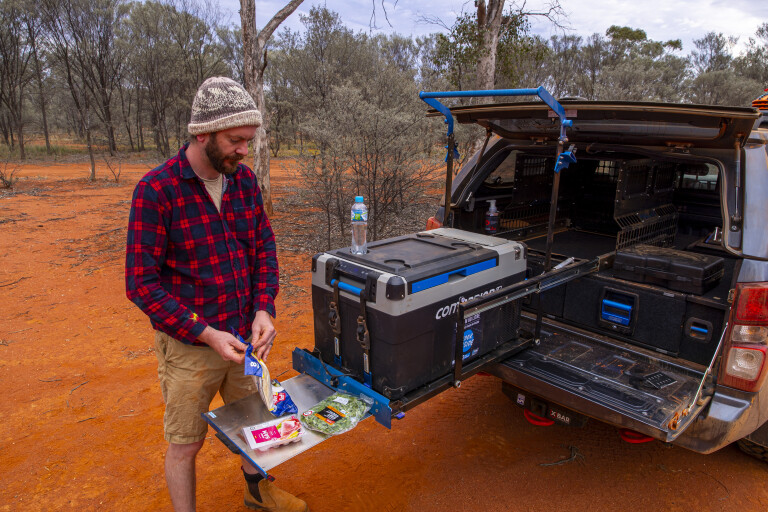
A 705kg payload doesn’t mean you can throw 705kg of gear in the back and be on your merry way, however, because deducted from that payload figure is the weight of vehicle occupants (driver and passengers), as well as any accessories fitted, such as bullbar, winch, side-steps, towbar, roof racks, drawer system and driving lights.
If you are a travelling family of four, for example, just two adults and a couple of youg’uns can easily add up to around 240kg, so your 705kg payload capacity is already reduced to just 465kg. A steel bullbar might weigh around 80kg, a winch with synthetic rope around 40kg, side-steps and towbar 70kg, a drawer system 50kg, a roof-rack system up to 25kg and a quality driving-light system up to 10kg. That adds up to another 275kg, reducing your available payload to just 190kg.
Just 190kg?! For food, water, tools, spares, recovery gear, tent/swags, clothes, electronics and personal items? It’s little wonder 4x4 utes are so popular, thanks largely to their greater payload capacities. But even if you drive a dual-cab 4x4 ute such as a Toyota Hilux SR5 auto with a 1050kg payload capacity, using the example above, and throwing on a 60kg canopy, you can still only pack in 475kg of gear before you’ll exceed payload capacity.

There are many very important reasons why you should avoid exceeding your vehicle’s payload capacity at all costs. Firstly, overloading your vehicle will have negative effects on the way it performs, handles and brakes.
It will also reduce off-road capability, result in excessive wear on mechanical components, increase tyre wear, mess up fuel economy and, most importantly, it can be downright dangerous. And if those aren’t reasons enough to not exceed payload, doing so is also illegal, it will void your vehicle’s warranty, and it will void your insurance policy should you have an ‘incident’.
The moral to this story? It’s vitally important to consider the weight of individual items when you’re purchasing equipment for your vehicle and your trip away.
Pack low
When you’re packing a 4x4, it’s a good idea to keep the heavy items as low as possible in the vehicle and the lighter stuff on top. The reason for this is to keep the vehicle’s centre of gravity as low as possible.
Raising the centre of gravity by packing too much heavy gear up high on a vehicle will adversely affect on-road ride and handling, resulting in more body roll when cornering, and more fore and aft pitching when braking and accelerating. It will also have a detrimental effect on a vehicle’s off-road performance, increasing the risk of a rollover in extreme terrain.
Heavy items that can easily be packed low in the vehicle include tools and spare parts that you might not need to access very often, if at all. Pack these things near the floor of the vehicle or at the bottom of the luggage area, and make sure they are properly secured.

You also want to pack these items as close to the centre of the vehicle as possible, so if you have a drawer system fitted, for example, pack heavy tools and spares in first so that when the drawer is closed, they are situated between the vehicle’s axles rather than hanging out the back, which can also have a detrimental effect on vehicle handling.
Water is another heavy commodity that should be located as low as possible in the vehicle. Fitting a water tank down near the chassis rails of the vehicle is the best way to carry water. Other options include water tanks that can be situated behind the back seat of a wagon or up against the headboard of a ute, or water bladders that can be situated on the floor behind the front seats.
If you opt for jerry cans for your drinking water, try to situate them as low and as far forward as possible in the cargo area of a wagon or the tub of a ute; but don’t make them totally inaccessible as you will obviously need access to water daily.
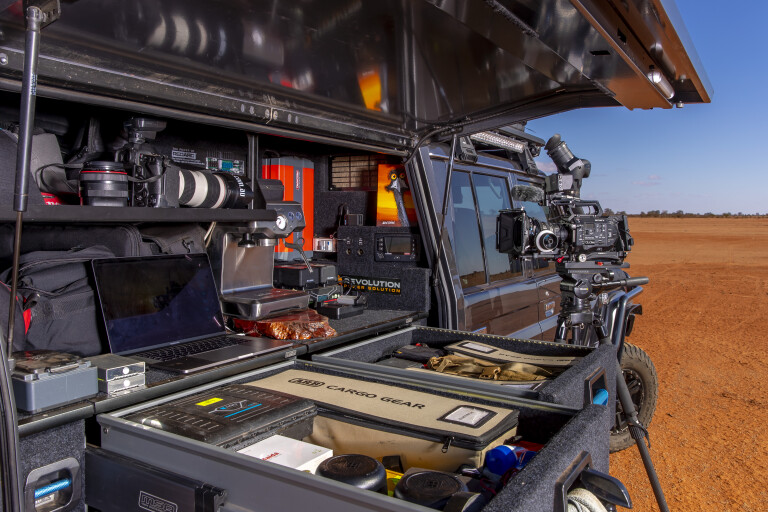
Like water, the best way to carry extra fuel is in a dedicated long-range or auxiliary fuel tank. This means the weight of the fuel is down low between the chassis rails, and it is well away from vehicle occupants.
If you opt to carry fuel in jerry cans, you should ensure they are on the outside of the vehicle, as the last thing you want is leaking fuel inside the cabin, or even in a ute tub/tray, especially if there’s a potential ignition source in there such as a dual-battery system or electrical equipment such as a 12-volt fridge/freezer.
A dedicated jerry can holder at the rear of the vehicle is one option, but if this is not possible a jerry can holder up on the roof rack might be your only other option, which will, as mentioned, raise the vehicle’s centre of gravity, as well as potentially cause injury when you’re trying to load/unload it.
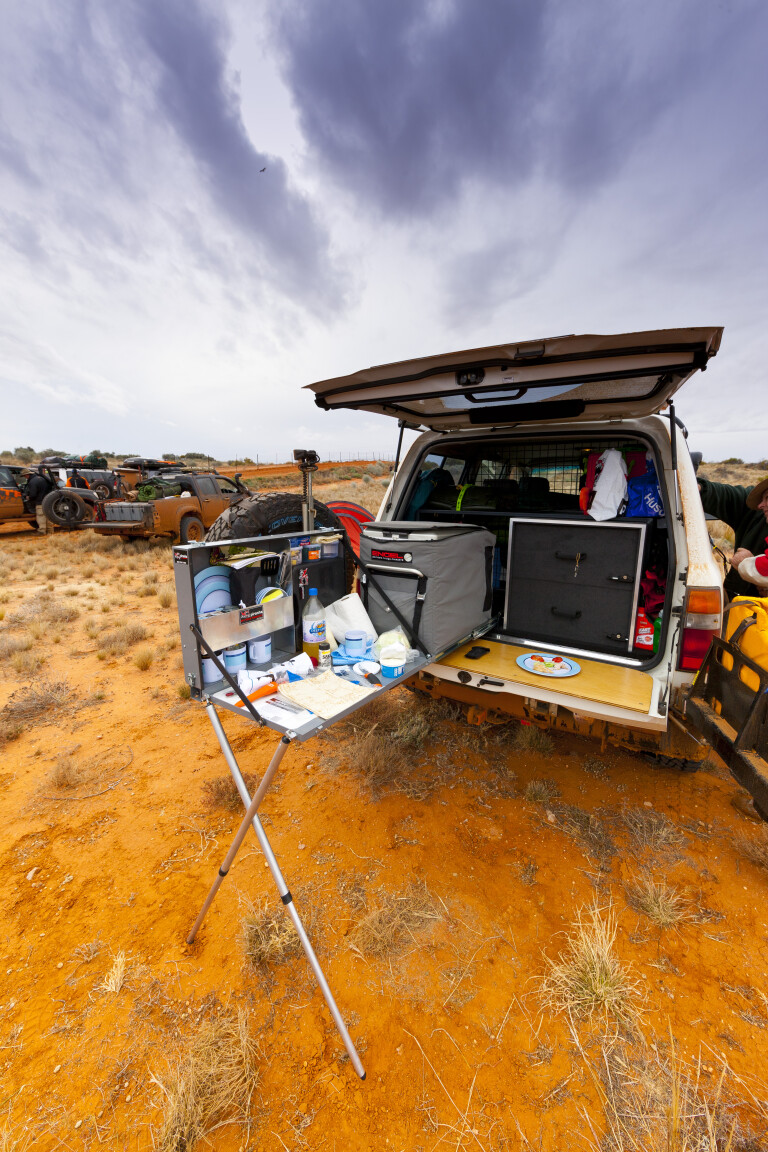
Like fuel jerry cans, gas bottles should also be carried outside the vehicle in case there’s a leak. Again, a dedicated holder is the best way to secure gas bottles.
Once all your heavy items have been secured as low as possible in the vehicle, you can now think about where the lighter stuff will go. Items like clothes and sleeping bags can be packed up high, and if they won’t fit in the cabin of a wagon or within the canopy of a ute, they will have to be packed up on a roof rack in a weatherproof cargo bag, space case or a roof pod, of which there are plenty of options on the market.
Pack the rack
When you’re packing gear up on a roof rack it’s important to know what the vehicle’s roof-load limit is, and also the carrying capacity of the roof rack system.
The vehicle’s roof-load limit will include the weight of the rack system itself, so if you fit an old-school steel tray, it will limit the amount of gear you can carry up top. Even if you fit a lightweight alloy roof-rack system, these can still weigh more than 25kg, which must be deducted from the weight you can carry up top.
The other thing to consider is that some vehicles have a static roof-load limit and a lower roof-load limit for when the vehicle is driving. This is especially important for those who run a rooftop tent, for example, as the static limit applies to the weight of the tent and the people sleeping in it, but only the tent for when the vehicle is in motion.
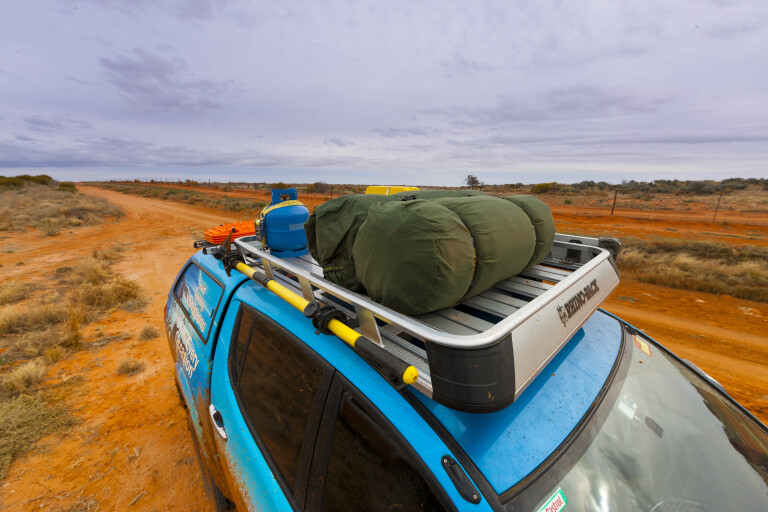
Additionally, some roof-rack system manufacturers list a lower roof-rack capacity when a vehicle is driven on gravel roads or in off-road situations, as vibrations from corrugations, or the action of the vehicle bouncing around when driven off road can place extra strain on the roof-rack system and the vehicle’s roof. It’s vitally important that you don’t exceed either the vehicle manufacturer’s roof-load limit or roof-rack manufacturer’s on- and off-road limits.
Bear in mind that many of the lighter items that are suitable for being carried up on a roof rack are quite bulky, such as tents, swags and gear bags. The bulkier they are the more wind resistance they will cause when driving at highway speeds, which will in turn affect vehicle performance and result in increased fuel consumption. And with the price of fuel well over $2/litre, fitment of a weatherproof and streamlined roof pod to carry some of your bulky gear could pay for itself after just a few trips.
Other items that are well suited to being carried up on a roof rack include recovery boards and shovels, and there are plenty of dedicated mounting systems for items like these that ensure they are both well secured and easy to access when you need them.
Pack for access
There’s some gear that regardless of size and weight needs to be packed for easy access rather than size and weight distribution, such as your first aid kit, fire blanket and fire extinguisher, and vehicle recovery equipment.
You should never travel off road without a well-equipped and up-to-date first-aid kit. Make sure everyone in the vehicle knows where it is and knows how to use it. All vehicles should also have a fire extinguisher mounted securely somewhere in the cabin where it’s easy to get at in the case of an emergency, and it’s a good idea to have a second fire extinguisher in the back of vehicles where cooking might take place or where electrical equipment is secured.

You will also need easy access to recovery gear. As well as the regular kit including gloves, snatch straps, shackles, snatch blocks and winch extension straps, make sure you always know where your winch controller is located. If you store all recovery gear in a dedicated bag, and pack it away properly after every use, you will have a better chance at being able to grab what you need when you need it than if you have bits and pieces scattered throughout your vehicle.
Likewise, always keep the air compressor in a handy, easy-to-reach location, along with the accessories that go with it, such as air-pressure gauge and air hose.
If you’re travelling in remote locations, make sure your satellite phone or satellite communicator is safely stowed, charged and within easy reach.
Pack tight
No matter whether you drive a wagon or a ute, properly securing gear is a must. The last thing you want is for heavy items to be flying around the cabin and whacking vehicle occupants when you’re driving off road, or worse still, in the event of a collision.
If you drive a 4x4 wagon, consider fitting a cargo barrier to keep heavy items separated from vehicle occupants. You’ll still need to tie stuff down, but a cargo barrier will also allow you to make the most of the available space inside your wagon, allowing you to pack in gear all the way up to the roof.
A drawer system is another fantastic way to secure gear, as well as to provide easy access. You can go a step further and use dedicated storage bags designed to work with different drawer systems. Just bear in mind that some drawer systems are heavy, and this weight will detract from a vehicle’s payload capacity.
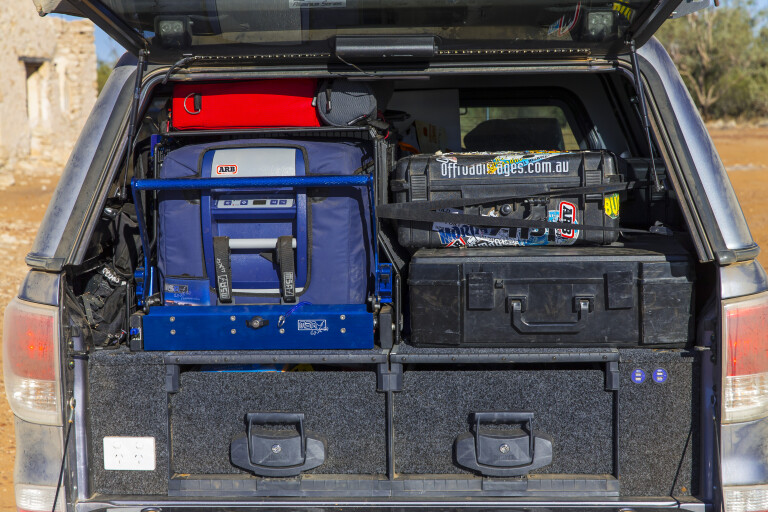
The portable fridge/freezer will also need to be secured properly within your vehicle, so a fridge slide will be a handy way to access chilled items. Some of the most convenient fridge slides drop down allowing for easy access to fridge contents, but again, bear in mind that some of these can be quite heavy.
If you have a fridge slide, you’ll probably want to fit a fridge barrier to stop other items from falling in behind the fridge when you pull it out. Again, these will add even more weight, but they are also convenient places to mount items such as fire blankets and fire extinguishers.
If you drive a ute, fitting a canopy is a great way to secure items in the tub. There are plenty of great designs on the market these days, manufactured from various materials. When selecting one for your rig, some things to consider include how it mounts to the vehicle’s tub, how heavy it is, how much access it provides through its doors and windows, and whether it can be fitted with a roof-rack system.
Pack right
No matter how you pack your own four-wheel drive, here’s a summary of the key points: keep weight down; keep weight low; keep dangerous goods away from vehicle occupants; keep safety equipment handy; and secure absolutely everything.
And if you think you might be nearing your vehicle’s payload capacity, load it up with passengers and gear, and put it over a public weighbridge; if it exceeds GVM you’re going to have to lighten your load.
Do
- Pack heavy items down low
- Pack safety items where you can easily access them
- Secure everything in your vehicle
- Put light stuff up top
- If in doubt, weigh your vehicle
Don't
- Exceed vehicle GVM
- Exceed roof-load and rack-system limits
- Store fuel inside vehicle cabin
- Store heavy items up high or out the back
- Hurt yourself putting heavy gear on the roof

COMMENTS